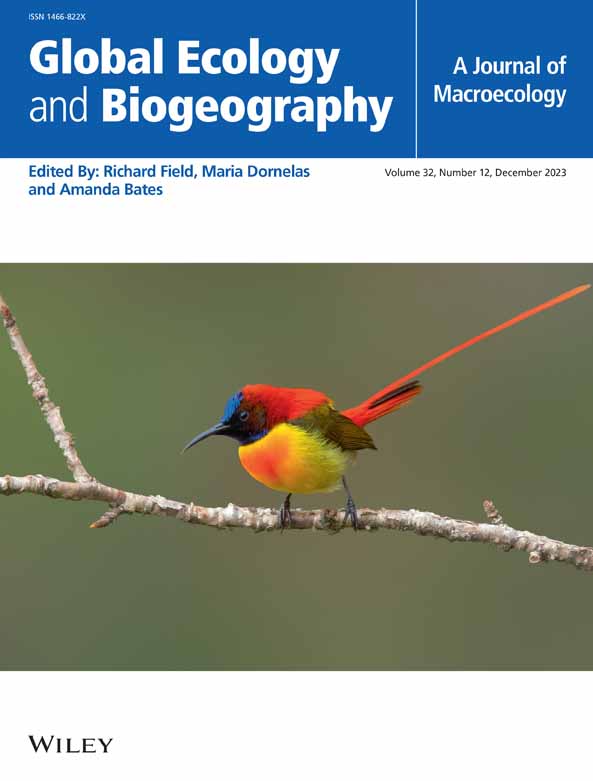Phylogeny and Climate Jointly Modulate Forest Growth Resistance in Response to Extreme Droughts in Arid Regions
Abstract
Aim
Repeated droughts have proven more harmful to forest growth than single extreme droughts. However, the impacts of drought durations on global forests and their underlying drivers remain poorly understood. The drought responses can be evaluated by drought sensitivity (resistance, Rt) and the post-drought recovery rate (resilience, Rs). Differing drought responses are attributed to the different evolutionary strategies of species, which are shaped by their distinct physiological traits. Given the spatial variability in climate warming rates and aridification, understanding how trees respond to droughts of different characteristics (duration, recurrence, severity) in forested biomes is crucial to forecast productivity trends.
Location
Global.
Time Period
1950–2020.
Major Taxa Studied
Tree species.
Methods
By explicitly considering different drought durations (single-year and multi-year extreme droughts), we assessed drought impacts on the growth of global forests. In addition, the roles played by environmental conditions (climate, soils), stand attributes (age, density), functional traits (wood density, leaf and hydraulic traits), and phylogeny in forest responses to drought were also considered. We used three tree-ring databases (global ITRDB, European GenTree, and tropical data) accounting for 4374 site chronologies during the period 1950–2020, and quantified patterns in tree responses to drought in different climatic regions and biomes, including tropical forests.
Results
In general, significantly higher Rt and Rs were observed in humid regions. Interestingly, while multi-year extreme droughts caused worse impacts than single extreme droughts on Rs, they did not affect Rt among drought events. Specifically, Rt in arid regions was phylogenetically conserved and largely depended on wood density (WD) and hydraulic safety margin (HSM), while in humid regions, it was closely linked to climate, SLA, and HSM.
Main Conclusions
These findings provide new insights on the forest responses to different types of droughts, emphasising an ecological and evolutionary framework of jointly considering environmental conditions, phylogeny, and functional traits in predicting growth resilience to guide management under more arid conditions.


 求助内容:
求助内容: 应助结果提醒方式:
应助结果提醒方式:


